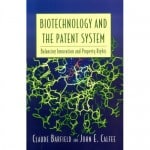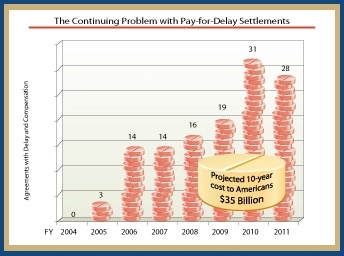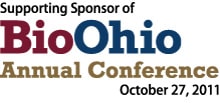“The U.S. patent system has shown a remarkable ability for identifying flaws and implementing self-correcting, substantive policy changes within existing authority.” ~Barfield and Calfee
On September 16, 2011, President Obama signed the Patent Reform Act of 2011 into law (“America Invents Act”). It is the first major reform of the patent system in decades. The new law provides for a conversion to a first-inventor-to-file system and an introduction of enhanced post-grant review procedures conducted in the USPTO. The Act also addresses pre-issuance submissions by third parties, supplemental examination, reissue, elimination of the best mode defense, special post-grant review for business method patents and USPTO authority to prioritize examination.

Given the passage of the America Invents Act, I wondered how the book held up. While Calfee passed away earlier this year, Barfield pondered the same thing in an article this fall. The authors suggested three criteria by which to judge the legislative proposals:
First, do no harm. We were quite aware of the unintended consequences of earlier legislative and administrative “reforms”—for instance, the creation of a separate court for patent litigation (Court of Appeals for the Federal Circuit), which in its early years tilted the system heavily in favor of patent holders. We also argued that the U.S. patent system had shown a remarkable ability for identifying flaws and implementing self-correcting, substantive policy changes within existing authority.
Our second, and most important, suggestion was to increase information flow through “bounded adversarial proceedings.” “Bounded” because we were very aware of the potential for increased costs and protracted delays in any new institutional proceedings.
Third, we acknowledged long-standing substantive and interest group clashes over key elements of the existing patent system.
So, how’d they do? Barfield thinks not too bad:
Reviewing the new legislation, it becomes clear that Congress demonstrated remarkable restraint—it did not push the envelope in areas where the system is self-correcting. For instance, the courts have tightened patent eligibility requirements by overturning patents that are “obvious” and lack inventiveness. Similarly, they have made it more difficult to obtain huge damages when a claim is only against a single patent in a multi-patent product.
With regard to greater information flow and a “bounded adversarial process,” the new law establishes a limited post-grant administrative review process that will be much less costly and time-consuming than litigation. Henceforth, during a short window after a patent has been granted, any outside party may challenge the initial determination of the Patent Office before a newly created review board. The act also provides for a more restricted reexamination procedure (a so-called “second window”) that can be requested after the conclusion of the first appeal.
On consensus-based reforms, the legislation moves forward with several important changes. It switches the United States from a first-to-invent system to a first-to-file system, which brings the country into line with most of the rest of the world. More important, this change will eliminate inconclusive and expensive proceedings to discern just when the “Eureka moment” occurred.
Agree or not, it would be good to see an updated version of the book in light of the law changes.
“Biotechnology and the Patent System: Balancing Innovation and Property Rights” is available from Amazon.
About the Authors
Economist John E. Calfee (1941-2011) studied the pharmaceutical industry and the Food and Drug Administration (FDA), along with the economics of tobacco, tort liability, and patents. He previously worked at the Federal Trade Commission’s Bureau of Economics. He had also taught marketing and consumer behavior at the business schools of the University of Maryland at College Park and Boston University.
Claude Barfield, a former consultant to the office of the U.S. Trade Representative, is a resident scholar at the American Enterprise Institute and researches international trade policy (including trade policy in China and East Asia), the World Trade Organization (WTO), intellectual property, and science and technology policy.




